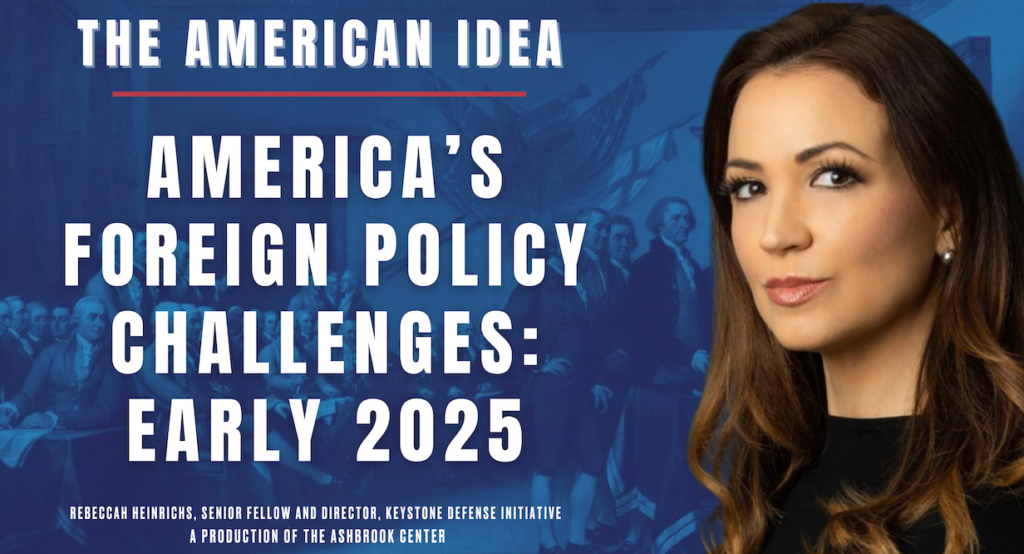America's Foreign Policy Challenges as of Early 2025
February 12, 2025

Listen and subscribe to the podcast
Join The American Idea’s Listener Email list – get news about upcoming episodes and a chance to offer questions for them, too!
The Emergence of a New Axis
In recent years, the United States has confronted a formidable coalition of adversarial nations—China, Russia, North Korea, and Iran—collectively challenging the established international order. This alliance “axis of adversaries” seeks to undermine the liberal democratic principles that have long underpinned global stability. Their coordinated efforts, encompassing military collaboration, economic partnerships, and shared strategic objectives, represent a multifaceted threat to U.S. interests and global influence.
China’s Multifaceted Challenge
At the forefront of this coalition is China, whose ambitions extend beyond regional dominance to reshaping global power dynamics. Economically, China wields significant leverage through its expansive trade networks and critical resource control, positioning itself as an indispensable player in global markets. Militarily, its rapid modernization and assertive posturing in contested regions aim to supplant U.S. influence, particularly in the Indo-Pacific. Ideologically, China’s adherence to Marxist-Leninist principles, coupled with an extensive censorship apparatus, poses a challenge to the democratic values championed by the United States.
The Imperative of Missile Defense
In response to these escalating threats, the Trump Administration has prioritized strengthening national defense mechanisms. A cornerstone of this strategy is the “Iron Dome for America” initiative, formalized through an executive order. This ambitious plan envisions a layered missile defense system designed to protect the United States from advanced missile threats posed by peer nuclear powers such as Russia and China. Incorporating space-based components, this system aims to counter sophisticated aerial attacks, reflecting a commitment to leveraging technological advancements in defense infrastructure.
Historical Parallels and Evolving Strategies
The “Iron Dome for America” initiative draws inspiration from the Reagan-era Strategic Defense Initiative (SDI), commonly known as “Star Wars.” While SDI faced technological and strategic challenges in its time, contemporary advancements have rendered missile defense systems more feasible and cost-effective. The current approach seeks to address the evolving nature of global threats, emphasizing the need for a robust and adaptable defense posture to safeguard national security.
The United States faces a complex and evolving security landscape, marked by the rise of a coordinated axis of adversaries and the multifaceted challenges posed by China’s ascent. Addressing these threats necessitates a comprehensive strategy that integrates diplomatic engagement, economic resilience, and advanced defense capabilities to uphold national security and maintain global stability.

